How to Enjoy an Accessible Costa Rican Adventure — From Hotels and Tour Operators to Transportation
In Costa Rica, accessible activities can include everything from zip lining and diving to chilling out at the pool bar. Here's what to know.
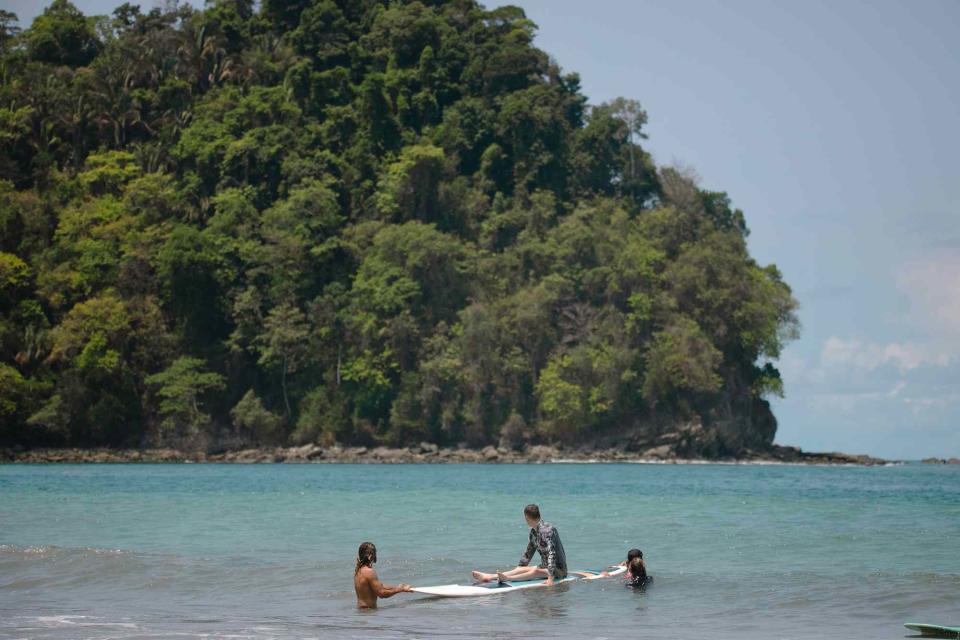
Courtesy of Dive the Americas
Costa Rica offers tourists some of the most lush greenery on Earth, breathtaking beaches, and countless options for those who love adventure. There’s certainly no shortage of activities or world-class places to stay, but unlike many tourists who can book their flight and leave the rest to spontaneity, foresight and planning are central for the 12.5 million (and growing) people who travel with disabilities every year.
Costa Rica first turned its attention towards accessibility in 1996, and over the last two and a half decades has steadily made improvements to make its best sights and tourist destinations welcoming for everyone.
This guide sheds light on some of the best that Costa Rica has to offer in accessible travel, including where to stay, how to get around, what to see, and which tour operators to tap for your visit.
Hotels and Resorts
Tabacón Thermal Resort & Spa
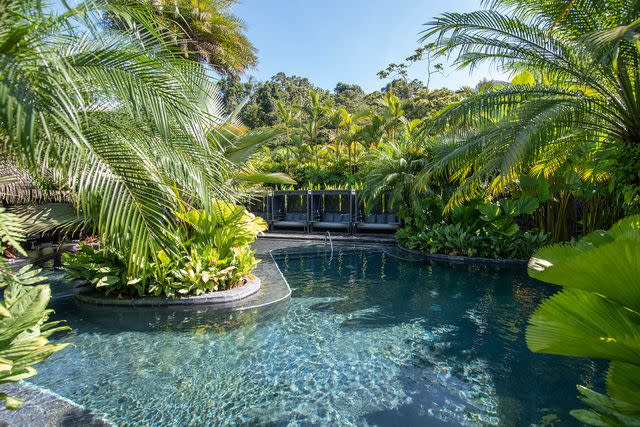
Courtesy of Small Luxury Hotels of the World
This boutique resort and spa has panoramic views of La Fortuna’s lush greenery. Resort board member Mario Mikowski said the resort recently added “an experiential wheelchair tour through the resort” and “remodeled the main pool so that guests in wheelchairs can access the swim-up bar.” There are property-wide access ramps, including to the resort's adults-only Shangri-Lá Gardens. You can also pick up a one-day pass to access the property. Rates start at $376/night.
Bosque del Mar
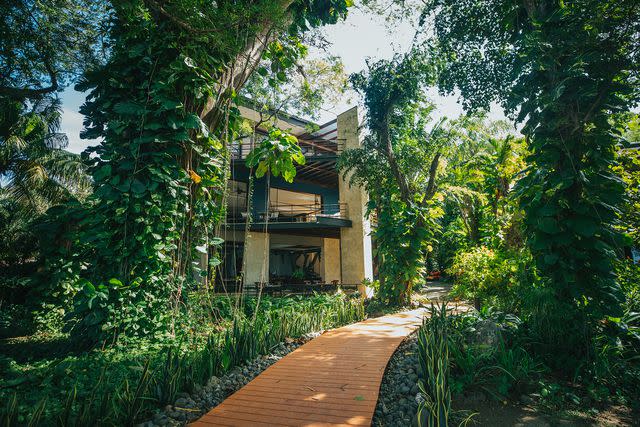
Courtesy of Hotel Bosque del Mar
Melanie Marsell of accessibility-minded diving tour group Dive the Americas says Bosque del Mar’s “garden suite rooms are the ideal choice” for the accessible traveler looking for beachside accommodation on one of Costa Rica’s most accessible beaches. There are wide pathways to all major property amenities and easy access to the beach. This property is close to several parks and its Niromi restaurant infuses Costa Rican flavors into international favorites. Rates start at $181/night.
Los Altos Resort
Los Altos Resort’s rustic suites have unbeatable panoramic views of the rainforest, Manuel Antonio National Park, and the Pacific Ocean. All suites are accessible by elevator. According to Marsell, getting to the resort’s amenities is easy, as they offer an accessible shuttle to the restaurant and ramped pool. For culinarily-minded travellers, there are 27 restaurants within a half a kilometer of the resort. Rates start at $366/night.
Amor Arenal
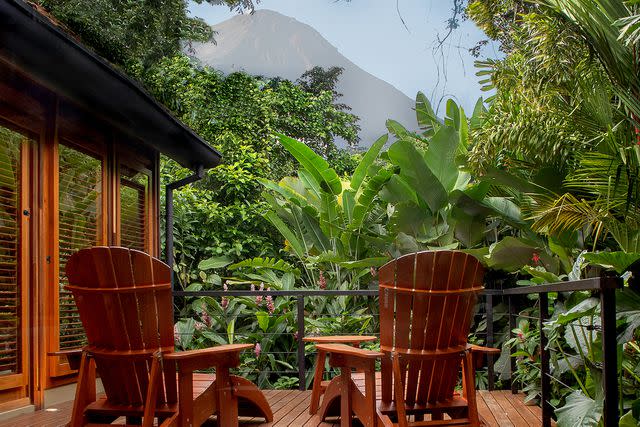
Courtesy of Amor Arenal
For accessible travelers seeking romance, Amor Arenal’s name says it all — it’s a hotel for lovers. There are two handicap-accessible rooms with private plunge pools with stunning views of the Arenal Volcano. According to Marsell, a lift can be requested for easy access into and out of the plunge pools. The property has a fixed ramp pool and the main pool with wet bar has an accessibility lift. Rates start at $548/night.
Cala Luna Resort
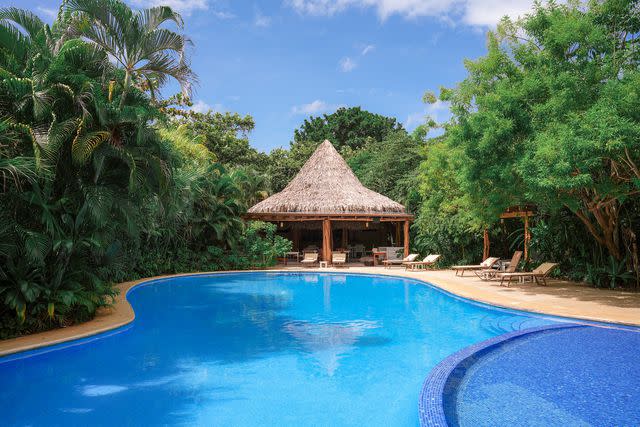
Courtesy of Cala Luna Boutique Hotel
For accessible travelers with wellness in mind, Cala Luna has an extensive range of wellness and spa services, including Tibetan singing bowls, sound baths, wave drums, massage, vitality treatments featuring a traditional Chinese heater called moxa, plus reiki and aromatherapy. According to Marsell, “all of the facilities are on the ground floor with easy access” and Tamarindo beach is five minutes away with an accessible ramp. Rates start at $342/night.
Outdoor Activities and Nature
Lankester Botanical Garden
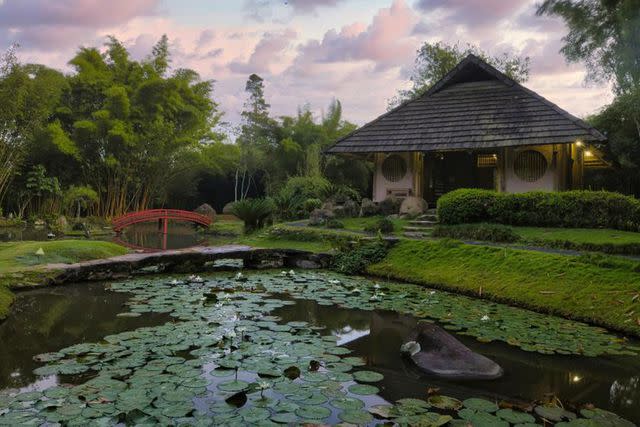
Courtesy of Lankester Botanical Garden
For orchid lovers, Lankester Botanical Garden in Cartago cannot be missed. The gardens are home to more than 3,000 species of plants, with nearly 1,000 being native and exotic orchids. The 27-acre botanical garden has wheelchair-friendly paths, and the gardens have wheelchairs available for rent to tourists.
Tortuguero National Park
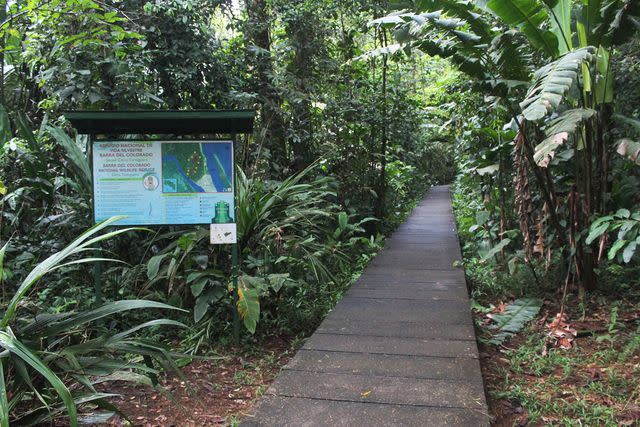
Courtesy of National System of Conservation Areas
Many tour operators offer handicap accessible tours of Tortuguero National Park, reachable only by boat or plane. The national park has a mix of beaches, canals, lagoons, and wetlands make it an excellent visit for bird and wildlife watching, turtle nesting, and boating.
Manuel Antonio National Park
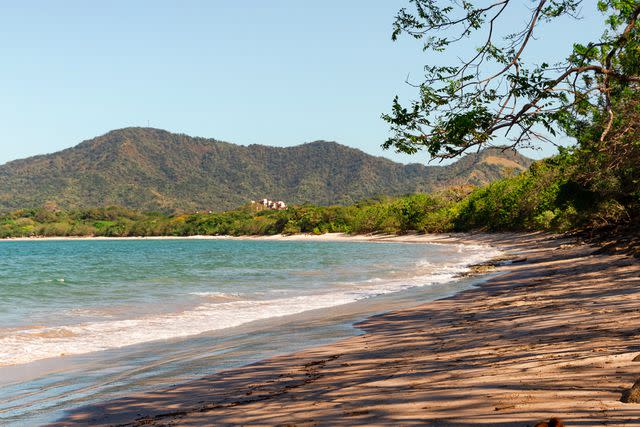
Adrian Rudd/Travel + Leisure
In February 2018, the accessible El Manglar trail opened in Puntarenas Province’s Manuel Antonio National Park. Built over a mangrove, the trail spans from the park’s entrance down to Espadilla Sur Beach and connects to existing trails. The park features white-sand beaches, rainforests, and hundreds of wildlife species.
Arenal Volcano
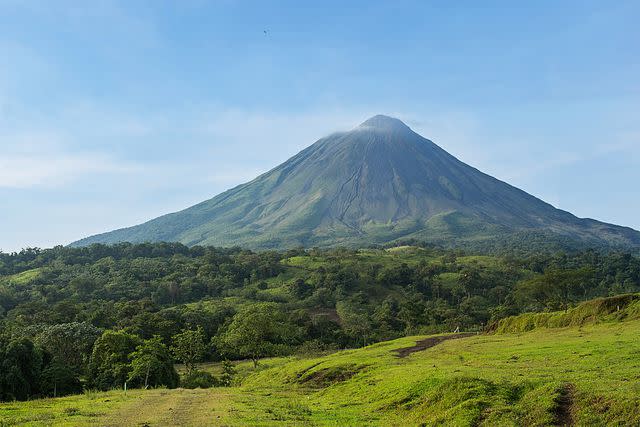
Courtesy of Visit Costa Rica
The “La Peninsula” zone of Arenal Volcano National Park in La Fortuna is a completely accessible trail area of the park, which features an active volcano. It’s renowned for its wildlife, and tourists will have an easy time spotting howler and white-faced monkeys, sloths, tapir, and various bird species.
Sky Adventures Arenal Park
For adventure-loving travellers, Sky Adventure Park’s Arenal location offers wheelchair accessible zip lines. The views at this location include the Arenal volcano, Lake Arenal, and primary rainforest. If you’re looking for an adrenaline rush on your next trip to Costa Rica, this is an accessible must.
Museums and Culture
Pre-Columbian Gold Museum
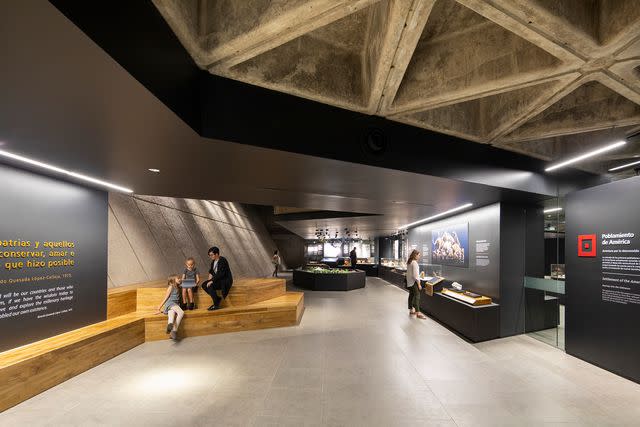
Andres Garcia Lachner/Courtesy of The Museums of the Central Bank of Costa Rica
Located in San José, Costa Rica’s Pre-Columbian Gold Museum has gold pieces and artefacts dating back to 500 A.D. The museum is a part of the Museos del Banco Central, which has exhibitions about numismatics, archeology, and visual arts.
Museo del Jade
The fully wheelchair accessible Jade Museum houses the largest collection of pre-Columbian jade artifacts in the world. There are more than 7,000 items on display, most from 500 B.C. and 300 B.C.
Museo Nacional de Costa Rica
The museum is wheelchair accessible and features a butterfly garden alongside exhibits about Costa Rica's natural history, anthropology and archaeology. The former fortress in San José was converted into a museum in the mid-20th century.
The Town of Sarchi
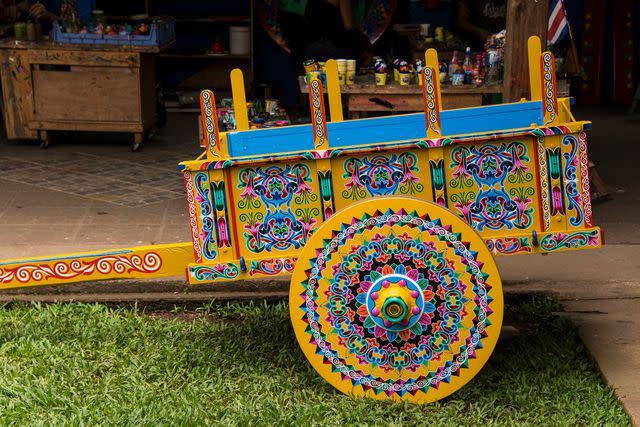
Prisma by Dukas/Getty Images
The capital of artisanal crafts in Costa Rica, the town of Sarchi is a small, handicap-accessible Alajuelan town. It’s also renowned for its oxcarts, which town residents would decorate with bright patterns and colors. Today, an oversized, hand-painted oxcart pays homage to this legacy and is a can’t miss photo opportunity for tourists.
Beaches
Costa Rica has 15 accessible beaches, thanks to the work of Red Costarricense de Turismo Accesible, a local organization that helps makes beaches accessible to everyone. Their Donatapa campaign turns recyclable beach waste into colorful handicap-accessible ramps.
In general, the western half of the country will be better for accessible tourism, as most of the accessible beaches are on the side of the Pacific Ocean rather than the Caribbean sea.
Jacó Beach
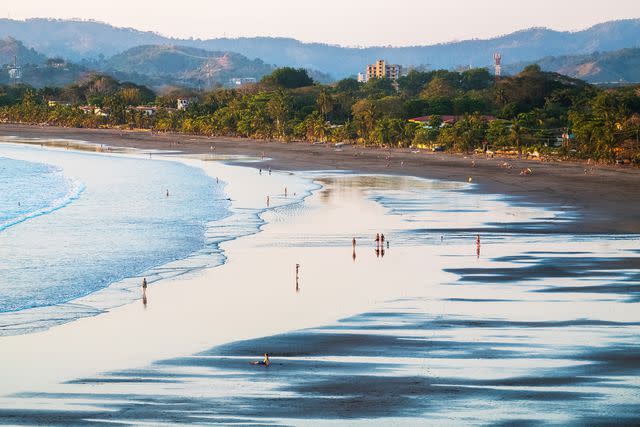
mihtiander/Getty Images
Locals recommend the fully accessible Jacó beach, which has a 206-foot-long ramp constructed out of recycled plastic. Home to a vibrant surfing community, Jacó was the first beach in Central America to be fully accessible to people with disabilities. The beach town is also a half hour’s drive from the wildlife-packed Carara National Park, which has low-impact trails, Braille information cards, and other aids.
Tours
Dive the Americas
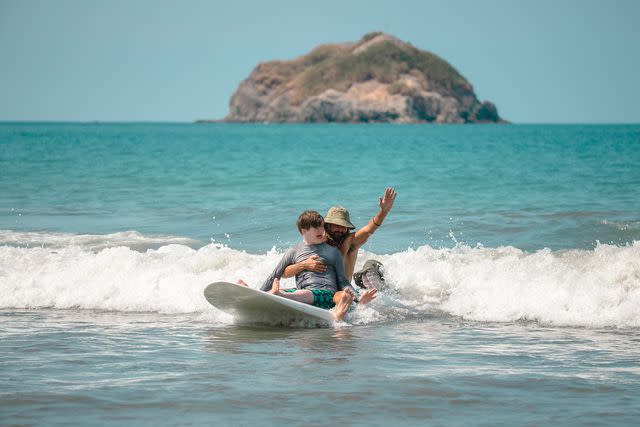
Courtesy of Dive the Americas
Dive the Americas is a travel company that specializes in dive travel planning, and they work with several dive operators that go above and beyond to ensure the safety of accessible travelers on dives. Marsell recommends booking “well in advance to ensure properly trained guides in small groups.” Dive the Americas works with Pacific Coast Divers in Guanacaste that have a wheelchair accessible boat and dive instructors that are trained and experienced in adaptive diving.
Il Viaggio
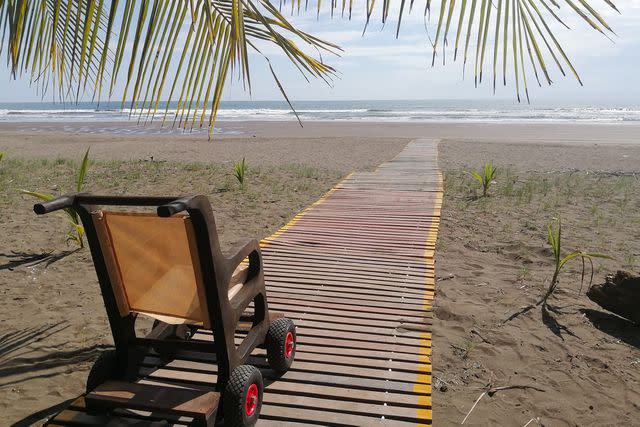
Courtesy of Il Viaggio
Il Viaggio is a local Costa Rican tour operator that specializes in accessible tours. They have pre-created packages, or can design something à la carte if you want to build your own itinerary, have specific travel needs, or require specialized mobility equipment.
Transportation
In San José, city buses are wheelchair accessible. Most taxis throughout Costa Rica can accommodate a folding wheelchair. The national airline carrier, Sansa, can also accommodate a folding wheelchair, but requires all passengers to board and deplane unassisted. Only some shuttles have a wheelchair ramp, so it’s important to inquire before booking to ensure that anyone who requires a ramp will be able to board a shuttle.
Several locals working in hospitality suggested bringing a cushion to help reduce the impact of the often-bumpy Costa Rican roads while travelling.
For more Travel & Leisure news, make sure to sign up for our newsletter!
Read the original article on Travel & Leisure.
